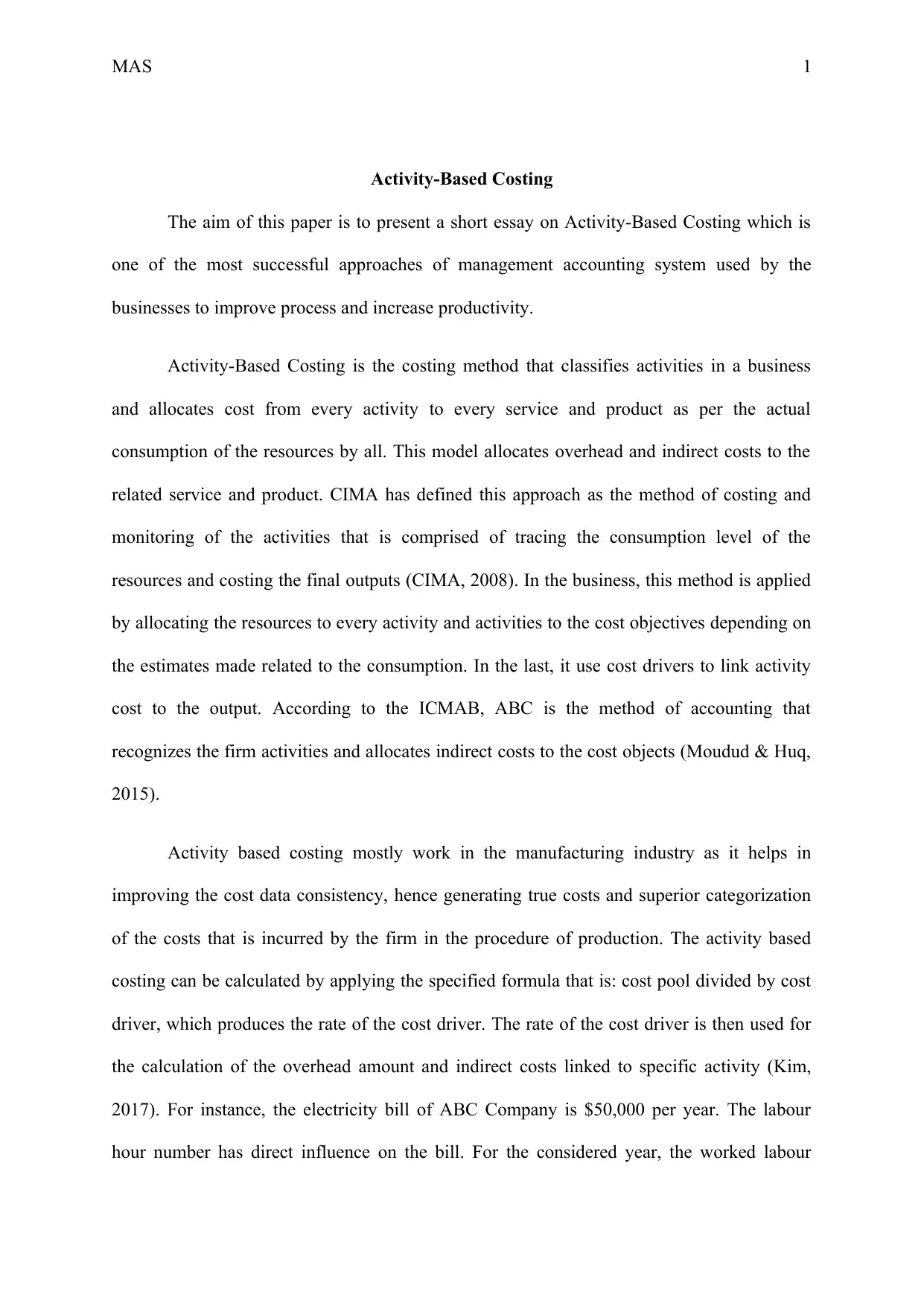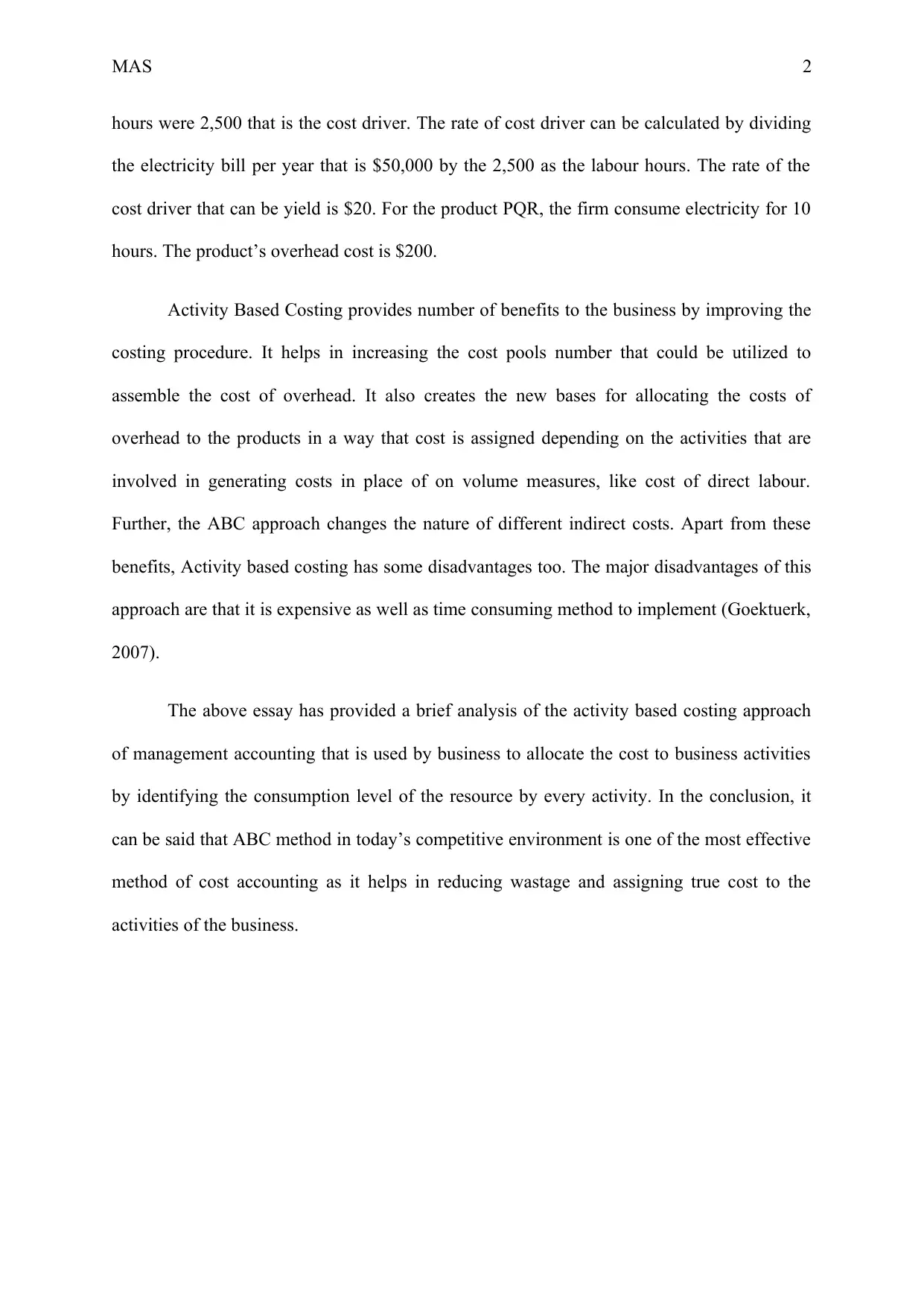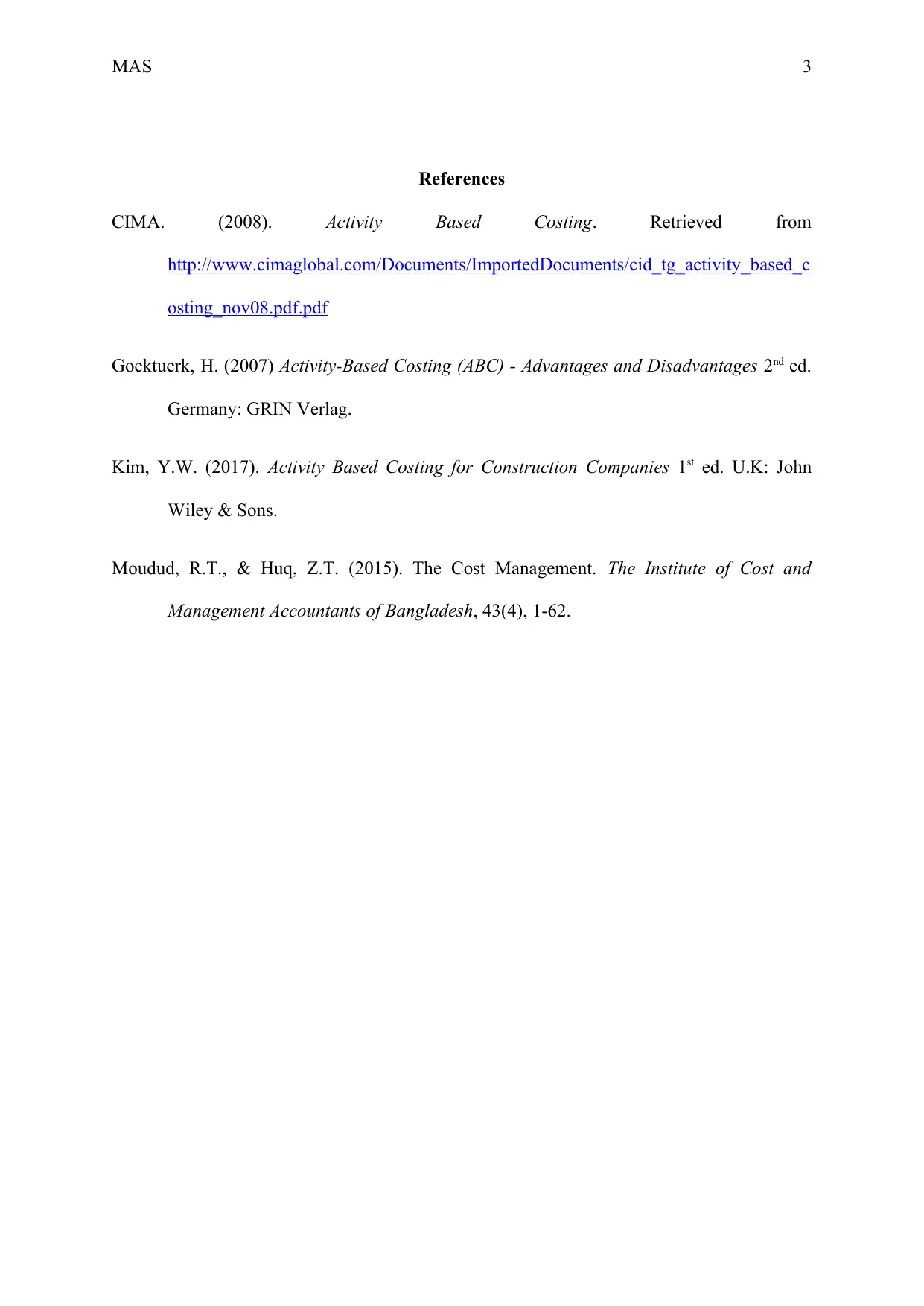MAS 1 (2019) Essay: Activity-Based Costing and Its Applications
VerifiedAdded on 2022/10/04
|4
|731
|14
Essay
AI Summary
This essay provides a comprehensive overview of Activity-Based Costing (ABC), a management accounting method used by businesses to enhance processes and boost productivity. It explains how ABC classifies activities, allocates costs to products and services based on resource consumption, and uses cost drivers to link activity costs to outputs. The essay highlights the benefits of ABC, such as improved cost data consistency and better overhead cost allocation, while also acknowledging its disadvantages, like being expensive and time-consuming. The analysis includes a practical example of calculating the cost driver rate. The essay concludes that ABC is an effective cost accounting method in today's competitive environment, aiding in waste reduction and accurate cost assignment. It references key sources like CIMA, ICMAB, and academic publications to support the discussion.
1 out of 4









![[object Object]](/_next/static/media/star-bottom.7253800d.svg)